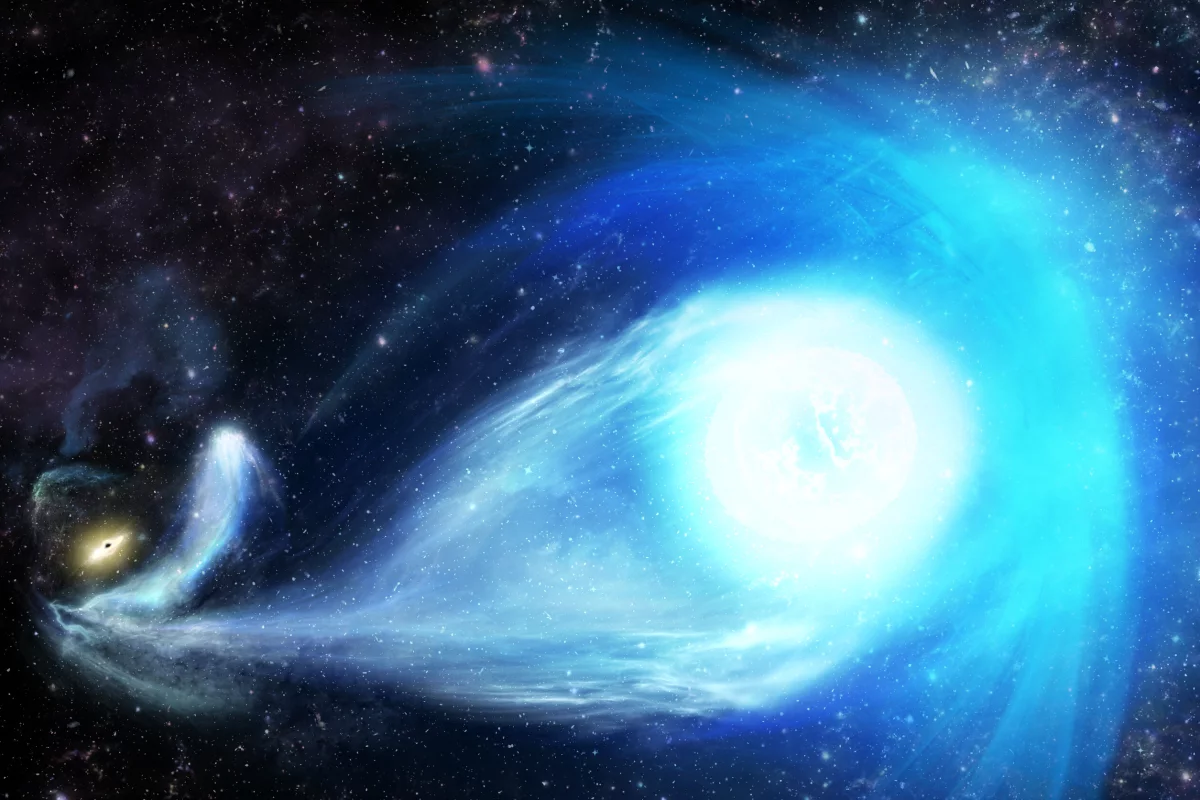The Sun is constantly moving through space at a speed of 720,000 km/h (450,000 mph) – but that’s a leisurely Sunday stroll compared to some. Astronomers have now discovered a star known as S5-HVS1, which is travelling at an incredible 6 million km/h (3.7 million mph). That not only makes it the fastest known star, but it’s enough to fling it right out of the galaxy.
Stars that are moving this fast are known as hypervelocity stars, and only a handful have been identified so far. Even so, “hypervelocity” is normally defined as those travelling faster than 500 km per second (310 mi/s), which is fast enough for them to escape the Milky Way’s gravitational pull and eventually whiz off into intergalactic space.
And S5-HVS1 is the fastest of them all. It’s zipping along at over 1,700 km/s (1,056 mi/s) – far surpassing the previous record-holder, a white dwarf called US708, travelling at 1,200 km/s (746 mi/s).
But where do these stars come from, and how do they get so fast? The most commonly-accepted hypothesis is what’s known as the Hills Mechanism – basically, when a binary system of stars wanders too close to a black hole, one is captured by the black hole while the other is ejected at high speed.
In the case of S5-HVS1, the team was able to trace back its journey and determine which black hole may have been responsible. It turns out it was none other than Sagittarius A* itself, the supermassive black hole at the center of the Milky Way.
“This is super exciting, as we have long suspected that black holes can eject stars with very high velocities,” says Sergey Koposov, lead author of the study. “However, we never had an unambiguous association of such a fast star with the Galactic Center. We think the black hole ejected the star with a speed of thousands of kilometers per second about five million years ago. This ejection happened at the time when humanity’s ancestors were just learning to walk on two feet.”
Located in the constellation of Grus the Crane, the star was discovered as part of the Southern Stellar Stream Spectroscopic Survey (S5), using the Anglo-Australian Telescope (AAT). Its speed and trajectory were then nailed down using data from the Gaia satellite’s extensive catalog of stars.
The discovery of S5-HSV1 helps build our growing knowledge of hypervelocity stars. Other recent studies have shown that they could help reveal unknown black holes in the galaxy’s spiral arms – and many of these shooting stars may actually originate outside the Milky Way.
The research was published in the journal Monthly Notices of the Royal Astronomical Society.
Source: Macquarie University




